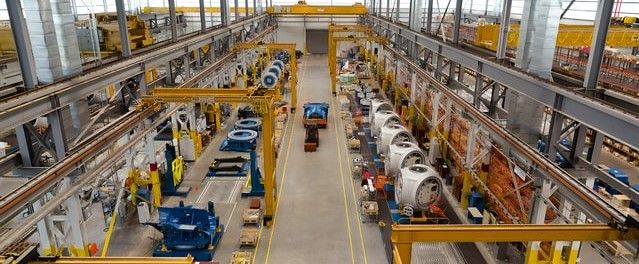Nanotechnology works at a scale that is so small that it is hard for most investors to comprehend.
The technical definition of a nanometre is one billionth of a metre, but how small is that?
Well, imagine an ant standing on blade of grass on a horse racecourse. The ratio in size between the racetrack and the ant, is the same as the ant is to a nanometre. The nanotechnology industry works with materials that are as small as a few nanometres.

Materials at this scale work differently than they do in our macro-sized world. Because of this, nanotechnology and the application of nanomaterials are some of the most promising fields for industry.
Why is nanotechnology the future?
The traditional use of materials at the macroscale is now reaching its physical limits. The technology for electrical transistors, for example, was developed decades ago when computers were so big, they filled a room. Yet, while today a mobile phone holds more computing power than those huge computers of the past, there is still a demand for even smaller devices.
To take computing to the next level will require the use of nanomaterials and an understanding of the laws of physics at in this tiny world.
At the same time, the raw materials for the production of other goods, such as paint, fabric, concrete, or plastic, is becoming more and more scarce. This is driving up prices and forcing manufacturers to do more with less. Consumers are demanding more from their products, wanting everyday items that work smarter, are more durable, weigh less, or are simply better than what they had before. While environmentalists want materials that last longer, use less non-renewable resources, and contain no hazardous substances.
Many companies around the world understand this and are diligently engaged in research and development in nanomaterials. This has created a nanotechnology market with a potential value of $6 trillion. An industry that has been growing at 10% each year for more than a decade.
What are the benefits of nanotechnologies?
At the microscopic level, nanoparticles can change and improve the properties of different materials. For example, by adding specific nanomaterials to the composites that make up the body of an aircraft, the material can be made stronger, more flexible, lighter, as well as be given electrical conductivity to help protect against electrostatic discharge and lightning strikes.
With such versatile and valuable results, the technology to make cheap and easily available materials such as carbon, so useful has clear economic rewards. At the same time, the potential application of nanomaterials is both far-reaching and in great demand.

Nanomaterials are already being used in:
· Industrial materials to make cars, ships, tyres, windows, military hardware, satellites, and aircraft.
· Industrial chemical catalysts.
· Electrical devices and components.
· Sports equipment.
· Plastic for windows, phone cases, household appliances, and car interiors.
· Composites for car parts, bicycles, and golf clubs.
· Coatings, paints, and varnishes.
· Sunscreens for added UV protection.
· Textiles for clothing, carpets, curtains, and bandages.
· Batteries for cars, phones, and other gadgets.
· Surfactants, degreasers, and cleaning products.
In short, nanotechnologies are a great promise for the future. It will enable the development of new, revolutionary materials, which will help improve not only our lives, but also the environment in which we live.
How does nanotechnology work in business?
Thousands of companies are already creating new markets with nanotechnology breakthroughs. They are investing in nanomaterial research and designing products to meet the material demands of today.
One of these businesses is the Czech company AG CHEMI GROUP, which has been operating on the global market for the supply and processing of chemical raw materials for 26 years.
Building on its vast supply chain experience and industry contacts, the company (which sponsors this website), is taking the development of raw materials and nanotechnology to its natural conclusion.

The company deals not only with research, but also with the practical application of nanotechnologies. It has already begun implementing its plans to build production lines for products used in the nanostructuring plastics. This purpose-built facility will have a capacity of as much as a thousand tons per year.
A unique nanomaterial research centre in the Czech Republic
For the last 5 years, its team of experts has been cooperating with European research institutes; focusing on the development and production of solutions based on nanomaterials, which it supplies to industrial customers. Their work is already bearing fruit, as they are currently patenting carbon addition technologies and have received a European Union grant worth €650,000 to build a nanotechnology centre that will become operational later this year.

An opportunity for a smart investment
The construction of this research centre and the production lines requires further investment. For this reason, the company has decided to partially finance the project with the help of publicly available bonds with an annual interest rate of 6.8%.
This offers general investors the opportunity to take part in the development and future of nanotechnology.

While the project offers long term advantages, the interest is paid to investors every month. The size of investment available and the amount it will earn can easily be worked out with the company's online calculator.
If you care about the future of our planet and are interested in the latest technology, investing in these company bonds represents a once-in-a-hundred-years opportunity.
To learn more about the company and how to invest, visit: AG CHEMI GROUP.
Photo credit: AG CHEMI GROUP, Juraj Lenhard from Pixabay, Karolina Grabowska from Pexels, Science in HD on Unsplash & Karim MANJRA